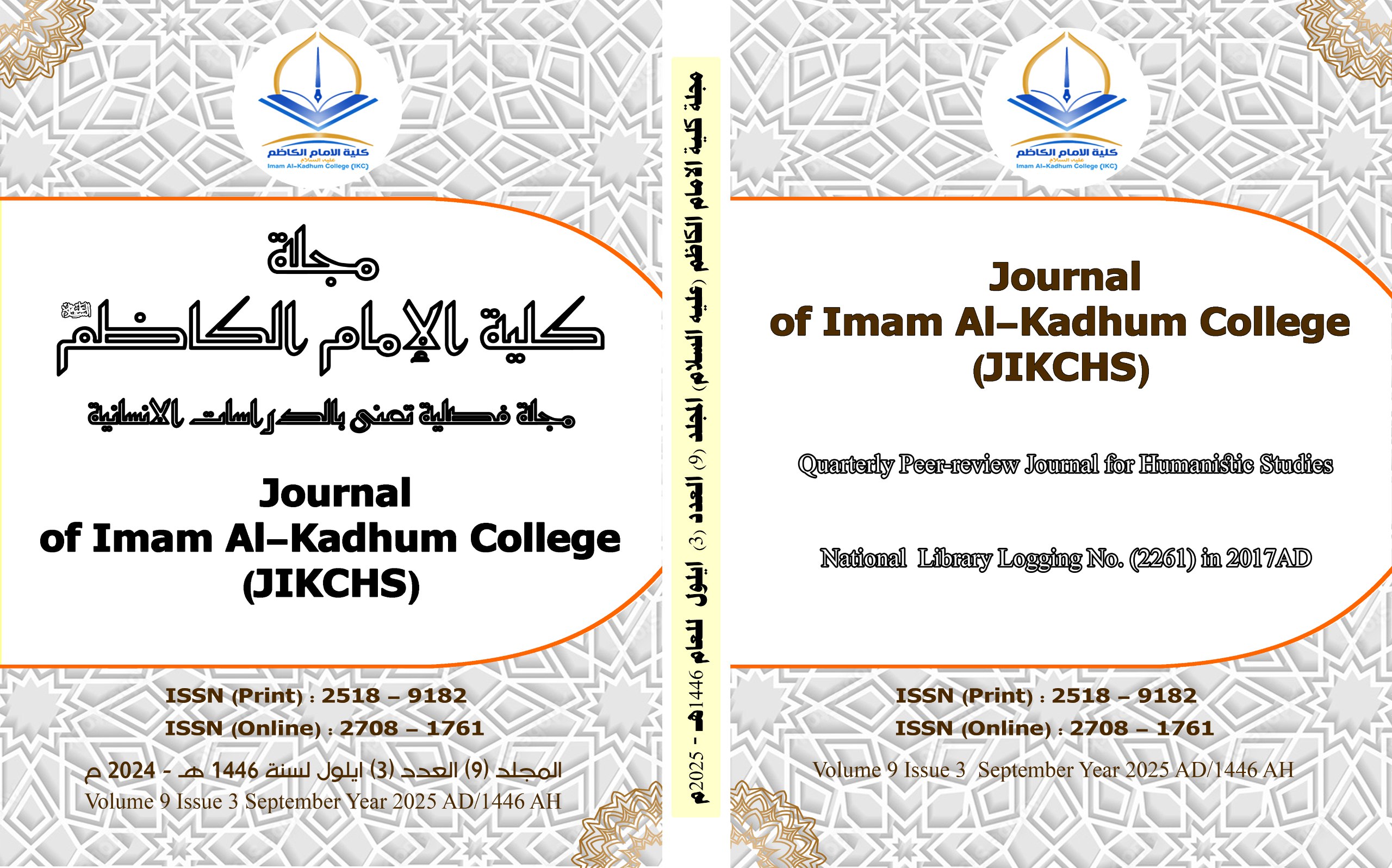Metacognition and Its Relationship to Critical Thinking among High-Achieving Secondary School Students
DOI:
https://doi.org/10.61710/vx0fy345Keywords:
Metacognition ,Critical Thinking, Outstanding students, Preparatory , Metacognition , Critical Thinking, Outstanding students, PreparatoryAbstract
This study aims to explore the relationship between metacognition and critical thinking among high-achieving high school students. Metacognition refers to an individual's awareness and regulation of their thinking processes, while critical thinking involves analyzing information and making logical decisions. The study employed a descriptive correlational research design and included a sample of 200 high-achieving students from Baghdad during the 2023-2024 academic year. Two scales were developed to measure metacognition and critical thinking, and their validity and reliability were confirmed through statistical tests
The results indicated that high-achieving students exhibited high levels of both metacognition and critical thinking. Additionally, a moderate positive correlation was found between metacognition and critical thinking, suggesting that enhancing metacognitive skills may contribute to improving critical thinking abilities. The study recommends integrating metacognitive and critical thinking strategies into curricula and employing interactive teaching methods to support these skills
References
(بلا تاريخ).
A Bandura. (17 3, 1986). Social foundations of thought and action: A social cognitive theory. Englewood Cliffs, NJ: Prentice Hall.، الصفحات 88-111.
A. L. (1987) Brown. (1987). Metacognition, Executive Control, Self-Regulation, and Other More Mysterious Mechanisms. ". In F. E. Weinert & R. H. Kluwe (Eds.), Metacognition, Motivation, and Understanding . Erlbaum، 65-116.
B. J Zimmerman. (3 8, 2002). "Becoming a self-regulated learner: An overview.". learning and instruction، الصفحات 342-363.
B. S. Bloom. (19 8, 1956). Taxonomy of educational objectives: The classification of educational goals. . New York, NY: Longman، الصفحات 561-584.
D. F Halpern. (18 7, 1998). Teaching critical thinking for transfer across domains: Dispositions, skills, and metacognitive monitoring. . American Psychologist، الصفحات 53(4), 449–455.
D.واخرون Whitebread. (23 11, 2009). The development of two observational tools for assessing metacognition and self-regulated learning in young children. Metacognition and Learni. . Metacognition and Learni، الصفحات 63-85.
G Schraw. (24 2, 1998). Metacognitive theories. Educational Psychology Review، الصفحات 442-4465.
G., & Moshman, D - Schraw. (9 4, 1995). . (1995). Metacognitive theories. . Educational Psychology Review، صفحة 465.
G., & Moshman, D Schraw. (8 4, 1995). Metacognitive theories. Educational Psychology Review، الصفحات 455-462.
J Dewey. (6 4, 1933). How we thin A restatement of the relation of reflective thinking to the educative process. Boston, MA: D.C. Heath.، الصفحات 387-402.
J Flavell. (13 9, 1979). Metacognition and cognitive monitoring: A new area of cognitive–developmental inquiry. American Psychologist، الصفحات 34(10), 906–91.
J. H Flavell. (12 3, 1979). . Metacognition and cognitive monitoring: A new area of cognitive–developmental inquiry. . American Psychologist، الصفحات 34(10), 906-911.
J. H Flavell. (29 7, 1979). b. Metacognition and cognitive monitoring: A new area of cognitive–developmental inquiry. . American Psychologist، الصفحات 34(10), 906–911.
kuhn, D. (1991, 6 23). . A developmental model of critical thinking. . Educational Researcher, pp. 28(2)16–25.
M & Afflerbach, P Veenman. (22 10, 2006). Metacognition and learning: Conceptual and methodological considerations. Metacognition and Learning، الصفحات , 1(1), 3-14.
M. E., & Kirk, A. Martinez. (2 9, 2010). Metacognition: A foundation for learning and teaching. Journal of Educational Psychology، الصفحات 45(1), 39-52.
P. A. Facione. (29 3, 1990). (1990). Critical thinking: A statement of expert consensus for purposes of educational assessment and instruction (The Delphi Report). Millbrae, CA: The California Academic Pres، الصفحات 45-60.
R. H. Ennis. (22 6, 1985). A logical basis for measuring critical thinking skills. Educational Leadership، الصفحات , 43(3), 44–48.
R. j Sternberg. (2 8, 1986). Critical thinking: Its nature, measurement, and improvement. . Washington, DC: National Institute of Education، صفحة 12.
R. S. Dennison. (25 5, 1994). Assessing metacognitive awareness. Contemporary Educational Psychology، الصفحات , 19(4), 460–475.
R., & Elder, L - Paul. (23 1, 2006). Critical Thinking: Tools for Taking Charge of Your Learning and Your Life. Prentice Hall. Educational psychology، الصفحات 34-42.
Suqi Li. (25 11, 2022). Constructing a critical thinking evaluation framework for college students majoring in the humanities Front. Psychol. Educational Psychology، الصفحات 13-30.
Downloads
Published
Issue
Section
License
Copyright (c) 2025 Journal of Imam Al-Kadhim College

This work is licensed under a Creative Commons Attribution-NonCommercial-NoDerivatives 4.0 International License.




